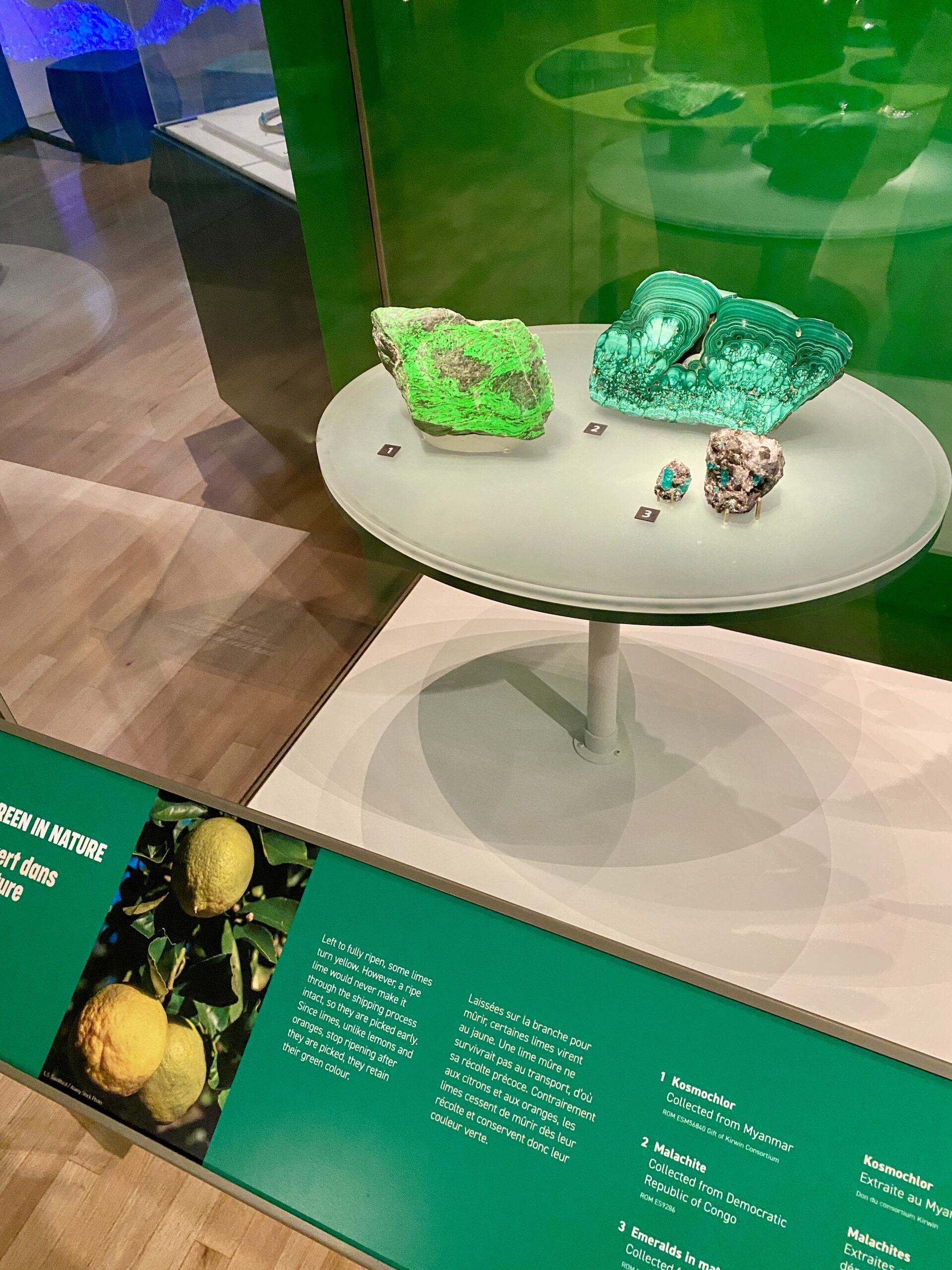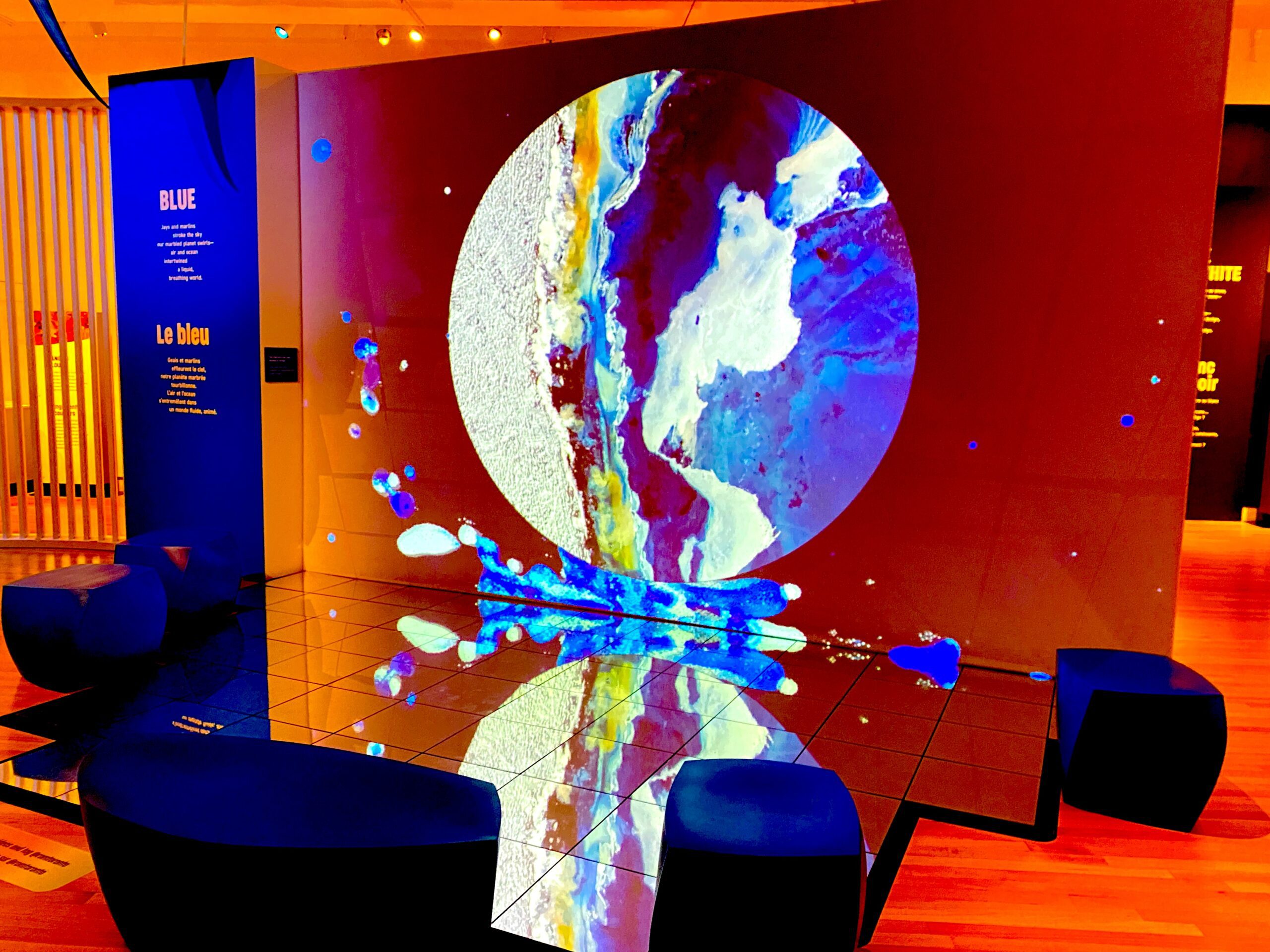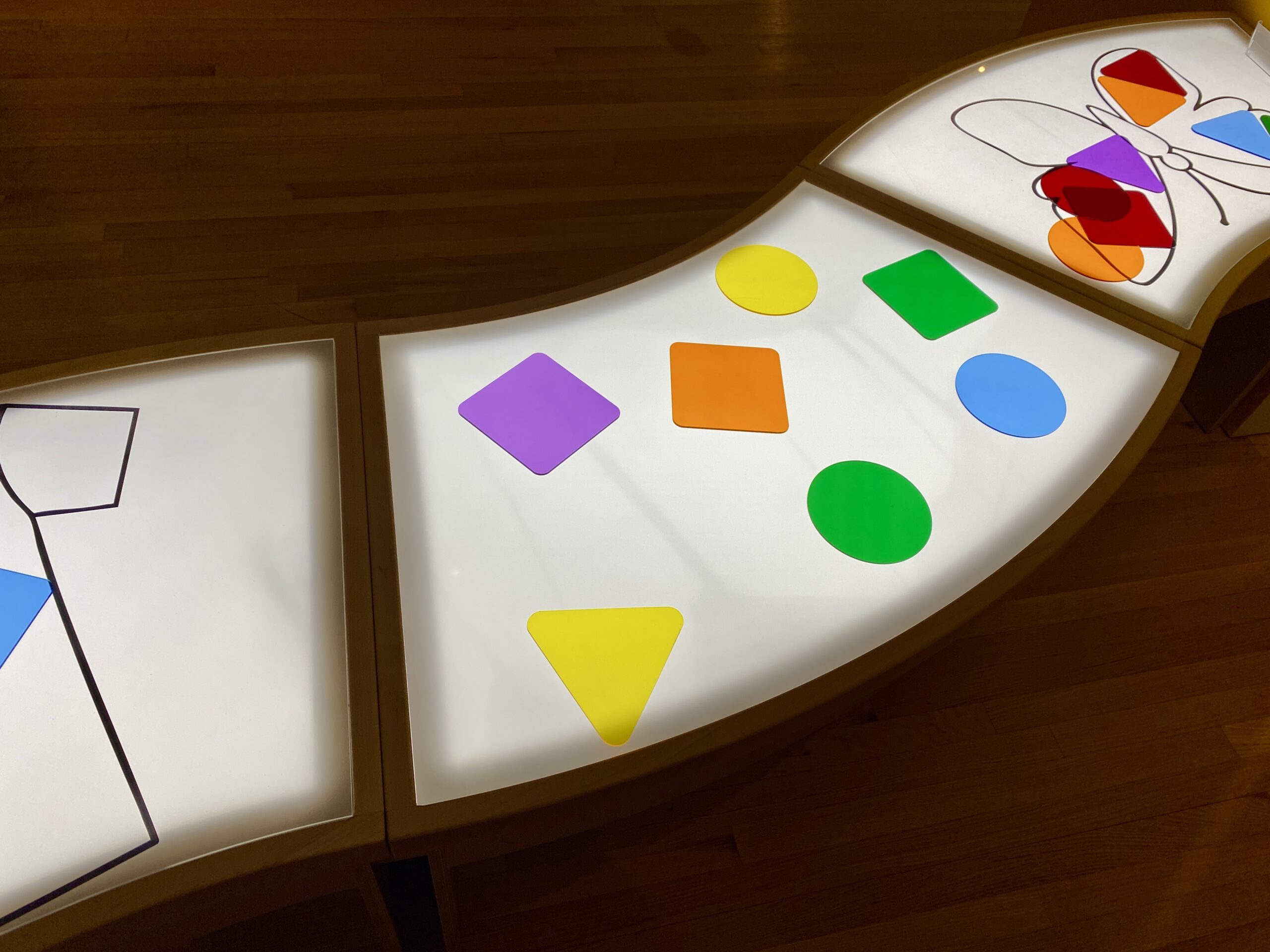Throughout Nature in Brilliant Colour—created by the Field Museum in Chicago and opened at the ROM in Toronto on December 14th, 2024—we are given the knowledge to do this, whether it’s our first time getting to know colours or we’re coming back to the concept.
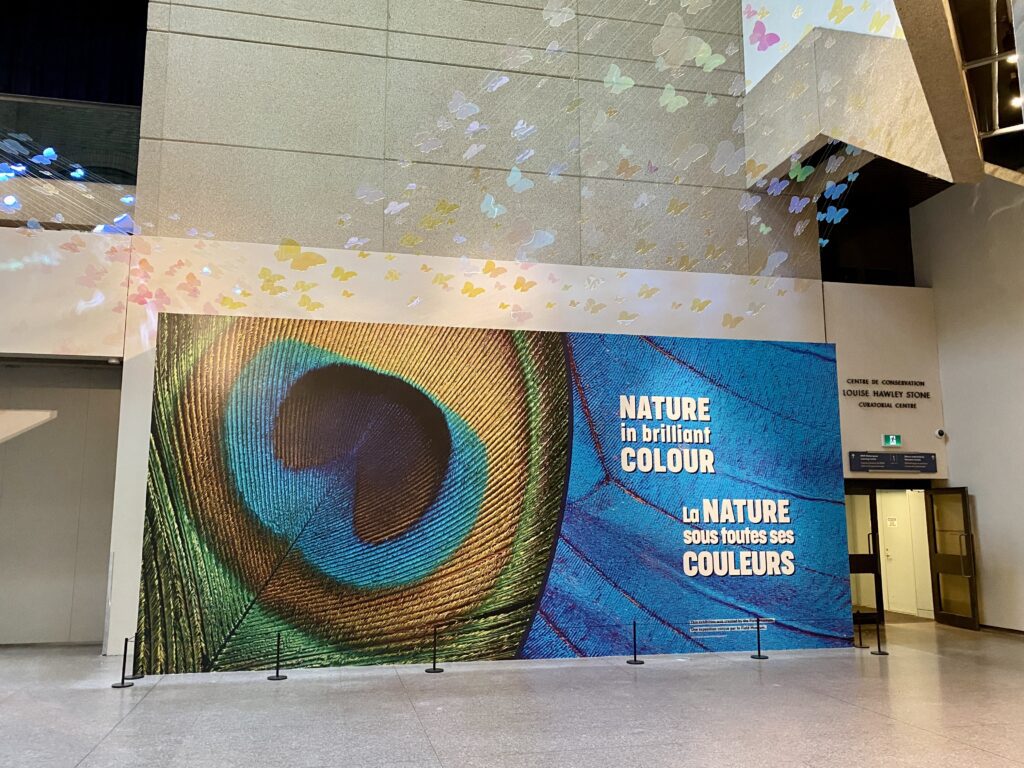
In essence, the exhibit takes us through the whole spectrum of colour, its varied purposes, and its phenomena in a comprehensive way. As the exhibit states, “Everywhere in nature, colour holds meaning. It evokes emotion, signals alarm, and creates illusion…” Case in point: the peacock that greets us in the exhibit’s first room spreads its illustrious feathers wide in order to either intimidate predators or to attract a mate.
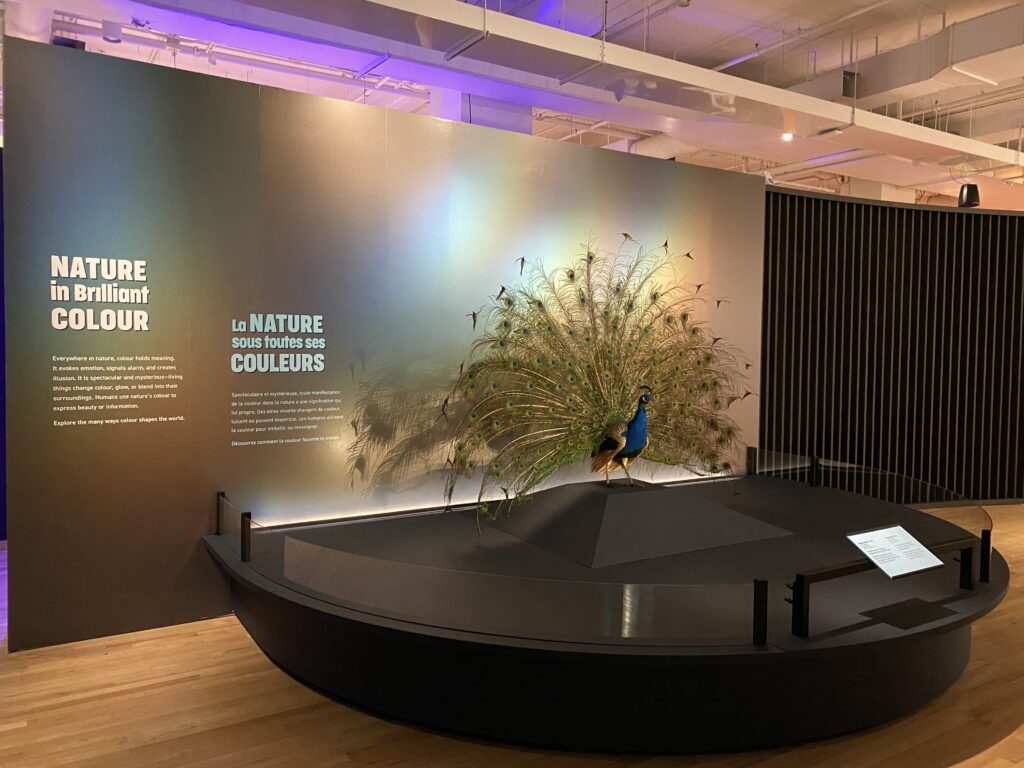
Before we examine colours, though, we need to understand vision first; or rather, why we as humans see what we see and how that compares to other organisms. Did you know, for example, that parrots have three colour-detecting cones (red, green, blue, and UV) and can see many more colours than humans, who usually have three of these cones (red, green, and blue). Conversely, dogs have two types of cones and see “shades of blues and yellows” as the exhibit explains. At this point, we are shown some impressive representations of these species’ vision and also encounter the first activity, where visitors can experiment projecting light through overlapping coloured lenses. There are a number of interactive elements like these that you’ll find going through the exhibit’s rooms, making it particularly interesting for kids.
Moving through the spectrum from red to orange, yellow, green, and blue, we are introduced to red as an attractive or dangerous colour, just as we saw with the peacock’s feathers. For instance, for the “bleeding heart baboon,” a bright patch of red skin on their hairless chest signals “fitness and readiness for mating,” while a granular poison frog’s deep red skin deters predators from eating it. And these characteristics continue throughout the spectrum. It’s plain to see how foundational fighting and mating are to organisms on earth.

Photo gallery
What will probably be unfamiliar to most visitors at the exhibit are facts about how exactly these colours appear. Which types of melanins create which colours? How does digestion connect to colour? How can protein fibres affect the bouncing of visible light? Not only that, the exhibit clarifies what causes something to be perceived as white, black, or iridescent, based on the reflection, absorption, or scattering of light.
Indeed, even having learned about these topics a long time ago, it was insightful to learn about the science of colour, to see it in all its mystery and vividness, and then compare it to how we use colour in the human world.
If you’re looking for a family outing in Toronto, this exhibit is another excellent offering from a Bloor St. Culture Corridor member, to enjoy in your off-time during the holidays and beyond.
You can see Nature in Brilliant Colour at the ROM until August 17th, 2025. Booking in advance is recommended for the best prices and easiest entry.


